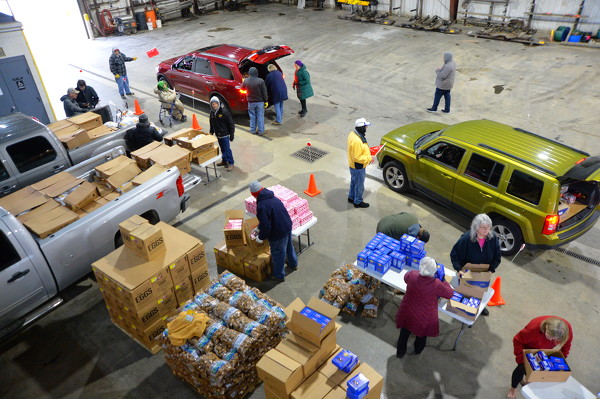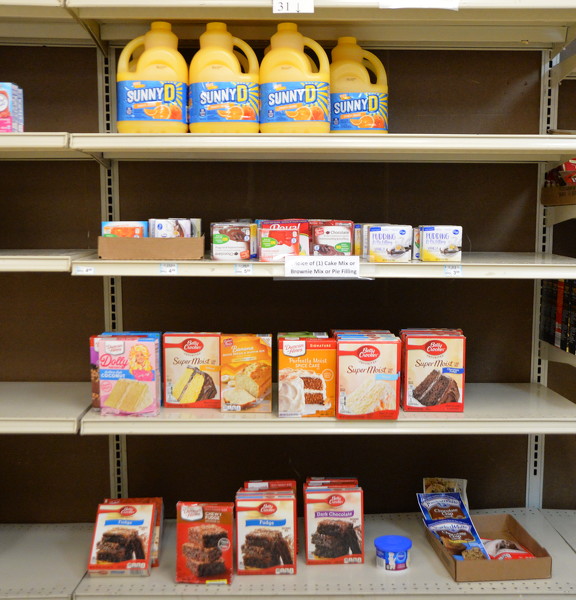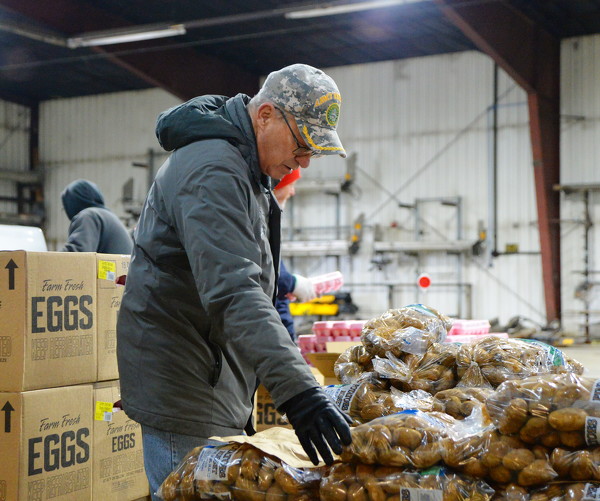
Volunteers from area churches hand out supplies to qualifying citizens during a past monthly food distribution in Wapakoneta. Supplies included groceries and COVID-19 tests.
As extra COVID-related payments for the program formerly known as food stamps end in February, area Job and Family Service directors encourage recipients to use other available programs including local food pantries.
Since March 2020, participants in the Supplemental Nutrition Assistance Program (SNAP) have received heightened monthly payments in response to the COVID-19 pandemic.
The extra payments ensured all households received the maximum allotment of funds for their household size, according to Ohio Department of Job and Family Services. However, recipients will see a return to their pre-pandemic monthly payments beginning March 1.
Nearly 3,000 Mercer County residents participate in SNAP, said Mercer County Job and Family Services director Angela Nickell. In Auglaize County, 1,255 households or 2,541 recipients receive SNAP benefits, said Auglaize County JFS director Julie Gossard.
"I think they (recipients) are going to be struggling," Gossard said of the change. "I think we are going to need to be helping some people out with some food pantry referrals, because they've kind of gotten used to this the last three years."

Groceries sit on shelves at Agape Ministries food pantry in St. Marys.
For example, Gossard said a family of seven who presently receive their maximum allotment of $1,480 each month might only receive $400 after the extra payments end March 1.
Inflation has had an impact on how far assistance will stretch, she added.
"We realize that across the board the cost of everything has gone up," Gossard said. "Unfortunately the eligibility standards for the food assistance has not changed. It has remained static."
Recipients use SNAP benefits through an Electronic Benefit Transfer card, which works like a bank debit card and holds the food assistance benefits assigned to the recipient each month.
Nickell said some people receive as little as $19 a month based on SNAP requirements. She believes many recipients have come to depend on the extra payments.
"I think it's going to be very difficult," she said.
She noted most of the people who participate in SNAP are employed but face obstacles trying to feed their families.
"They are employed, it's just that their income is not quite high enough to support their families fully," Nickell said.
Nickell noted the cost of rent, which averages $800 a month, fuel and other bills such as childcare put a dent in families' budgets. At the same time, she added wages have improved over the past year with starting wages of several jobs in the $14-$17 range.

A volunteer hands out V8 juices to qualifying citizens during a past monthly food distribution in Wapakoneta.
Gossard said Auglaize County food pantries such as God's Storehouse and Mercy Unlimited in Wapakoneta and Agape Ministries in St. Marys work well with their clients.
Nickell said Mercer County JFS offers classes for SNAP recipients on how to fully stretch their assistance with coupons and meal planning through OSU Extension.
"Even simple meal planning week by week can make a big difference in a grocery bill," she said.
Mercer County JFS also offers Prevention Retention Contingency services, which are designed to divert families from cash assistance. The program offers support for maintaining new employment, such as covering fuel or work expenses like uniforms.
For those who qualify, JFS also provides limited financial assistance for childcare through PRC, as well as assistance with vehicle repairs.

Volunteer organizer Jack Preston hands out bags of potatoes at a past monthly food distribution in Wapakoneta.

Volunteers hand out frozen turkeys at a past monthly food distribution in Wapakoneta.

